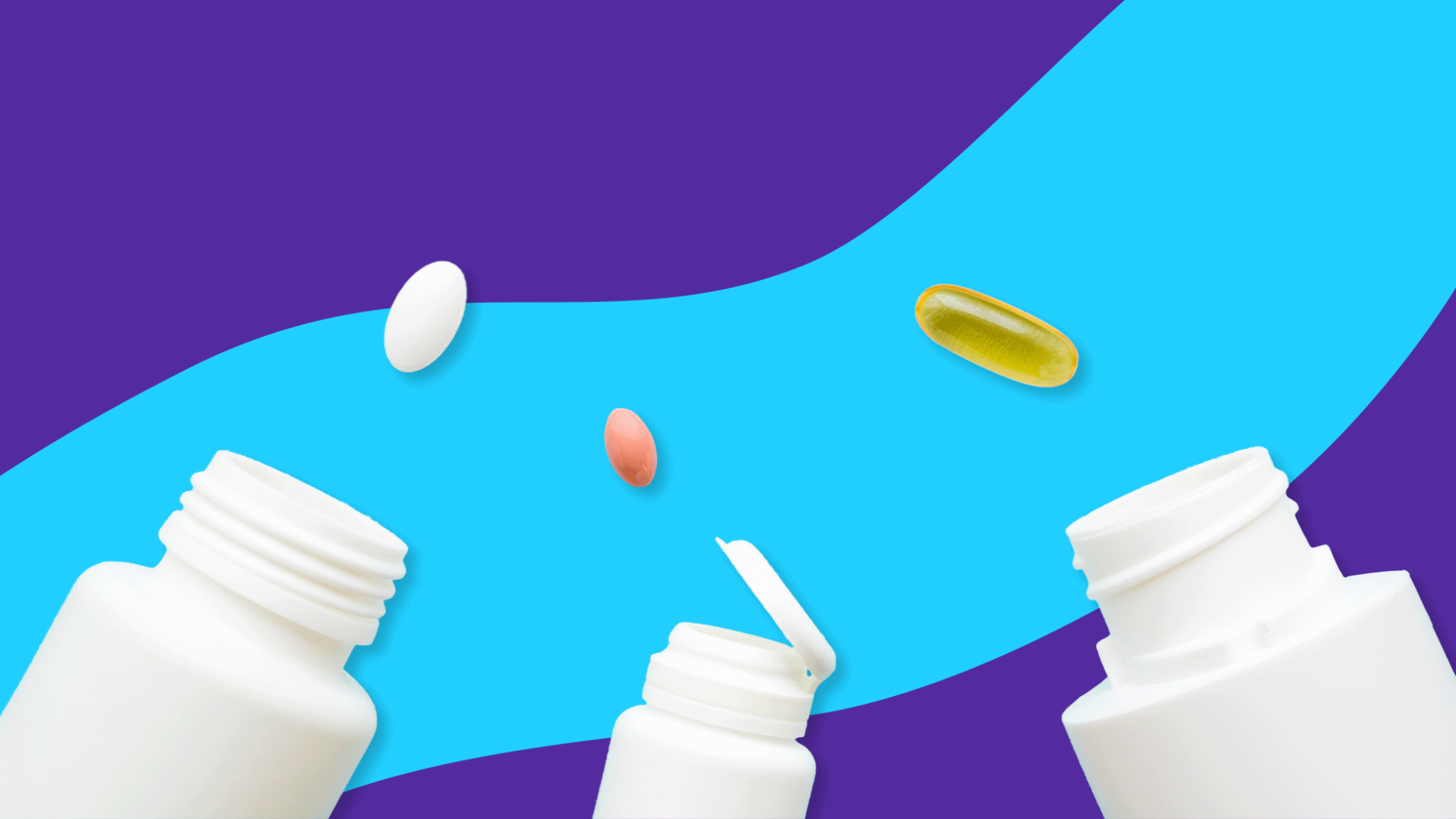Compare Vascepa alternatives | Lovaza | Zetia | Tricor | Lopid | Niacor | Natural alternatives | How to switch meds
Omega-3 fatty acids are polyunsaturated fats that perform vital functions in the body, yet are essential nutrients which means you need to get them from your diet. Unsaturated fats, like omega-3 fatty acids, are sometimes referred to as the “good” or “healthy” fats and are healthier alternatives to saturated, or “bad” fats, which are known to increase the risk of heart disease and stroke.
There are three main types of omega-3 fatty acids, EPA (eicosapentaenoic acid), DHA (docosahexaenoic acid), and ALA (alpha-linolenic acid). Both EPA and DHA are found in fish, while ALA is found in plants. We can turn some ALA from our diet into EPA and eventually DHA. Still, this process provides only a minimal amount of EPA and DHA. Therefore, dietary sources are critical. Fish is an excellent source of omega-3 fatty acids for most healthy people. The American Heart Association (AHA) recommends that adults consume a 3.5-ounce serving of cooked (roughly ¾ cup) flaked fatty fish (e.g., tuna, salmon, etc.) twice a week. Omega-3 fatty acids come with a handful of potential cardiovascular health benefits, including a reduction of triglycerides.
High triglycerides in your blood, known as hypertriglyceridemia, increase the risk of atherosclerosis, subsequently increasing the risk of heart disease and stroke. Vascepa (icosapent ethyl) is a highly purified form of EPA manufactured by Amarin Pharma, Inc. and approved by the Food and Drug Administration (FDA) as an adjunctive agent in patients with severe hypertriglyceridemia or for cardiovascular risk reduction in patients with hypertriglyceridemia. Evidence suggests a dose of 2 g twice daily (in addition to a statin) may prevent a cardiovascular event in approximately 1 in 21 high-cardiovascular risk patients over five years compared to a placebo. Therefore, in patients whose triglycerides remain elevated (defined as greater than or equal to 150 mg/dL) after lifestyle changes and optimal low-density lipoprotein (LDL) lowering therapy or those who warrant additional cardiovascular disease risk reduction.
Vascepa is recommended over other therapies to lower triglycerides. However, Vascepa alone only modestly lowers triglycerides, and adverse effects of Vascepa include the development of atrial fibrillation in about 1 in 71 patients. It may also increase the risk of bleeding and is expensive. Here, we will discuss Vascepa alternatives that might be considered in patients with hypertriglyceridemia.
What can I take in place of Vascepa?
Cardiovascular disease is impacted by cholesterol carried by triglyceride-rich lipoproteins. Non-fasting triglycerides persistently greater than or equal to 175 mg/dL (fasting greater than or equal to 150 mg/dL) is a risk-enhancing factor for cardiovascular disease. Acute pancreatitis is associated with triglycerides greater than or equal to 500 mg/dL, and especially greater than or equal to 1,000 mg/dL. The general approach to high triglycerides is to implement lifestyle interventions, identify secondary causes of hypertriglyceridemia, and then consider pharmacologic interventions based on the patient scenario.
Prescription medications should be considered as contributing factors to high triglycerides, and those known to increase triglycerides include atypical antipsychotics, steroids, beta-blockers, diuretics, certain oncology drugs, and other immunosuppressants. Conditions that contribute to hypertriglyceridemia include poorly controlled diabetes mellitus, uncontrolled hypothyroidism, rheumatoid arthritis, and systemic lupus erythematosus, among others. After reversible causes are removed, lifestyle modifications are adapted, or contributing conditions are optimally managed, pharmacologic approaches can be considered.
Statins should be initiated per lipid guidelines (to achieve goal LDL cholesterol and HDL cholesterol levels). They can also reduce triglycerides by 10%-30% depending upon the statin and dose. Statins are the lipid-lowering agent of choice, given the robust evidence supported by clinical trials for reducing cardiovascular events, including death. Non-statin medications, like Vascepa and its alternatives, have a more limited role. A non-statin may be indicated for patients who cannot tolerate the recommended statin dose or who do not achieve the expected response—a 50% LDL reduction with a high-dose statin, achieving an LDL goal of less than or equal to 70 mg/dL, or who have persistently elevated triglycerides. Specific scenarios may make an alternative to Vascepa more appropriate for certain individuals.
Compare Vascepa alternatives |
|||
|---|---|---|---|
| Drug name | Uses | Dosage | Savings options |
| Vascepa (icosapent ethyl) | Hypertriglyceridemia; cardiovascular risk reduction with hypertriglyceridemia | 2 g by mouth twice daily with meals | Vascepa coupons |
| Lovaza (omega-3 ethyl esters) | Hypertriglyceridemia | 4 g by mouth once daily or 2 g by mouth twice daily | Lovaza coupons |
| Zetia (ezetimibe) | Homozygous familial hypercholesterolemia; primary hyperlipidemia; secondary prevention of atherosclerotic cardiovascular events after acute coronary syndrome | 10 mg by mouth once daily | Zetia coupons |
| Tricor (fenofibrate) | Hypertriglyceridemia | 48 mg to 145 mg by mouth once daily, with or without food | Tricor coupons |
| Lopid (gemfibrozil) | Hypertriglyceridemia | 600 mg by mouth twice daily, taken 30 minutes before breakfast and dinner | Lopid coupons |
| Niacor (niacin) | Dyslipidemia | 250 mg by mouth once daily; increase frequency and/or dose every 4 to 7 days to desired response or therapeutic dose (1.5 g to 2 g daily in 2 to 3 divided doses); may continue to increase at 2- to 4-week intervals to a maximum daily dose of 6 g daily in 3 divided doses | Niacor coupons |
Top 5 Vascepa alternatives
The following are the most common alternatives to Vascepa.
1. Lovaza (omega-3-acid ethyl esters)
Lovaza can be considered in patients greater than or equal to 20 years of age with severe hypertriglyceridemia-defined as triglycerides exceeding 500 mg/ despite being on an optimized statin to reduce pancreatitis risk. This is a prescription omega-3 supplement that provides both EPA and DHA, whereas Vascepa only provides EHA. The dose is either 4 grams once daily or 2 grams twice daily. Still, each gram of Lovaza contains approximately 465 mg of EPA and 375 mg of DHA. Lovaza capsules should be administered whole and taken with food to improve tolerability. Caution should be used in patients given an increased risk of bleeding reported with Lovaza, especially in those already receiving anticoagulants like warfarin or other agents with antiplatelet properties. Use should be avoided in patients with known allergy or hypersensitivity to fish and/or shellfish due to the risk of an allergic reaction. Like Vascepa, atrial fibrillation or flutter risk exists in those with a history of either cardiac rhythm abnormality or within the first several months of therapy.
RELATED: Vascepa vs. Lovaza: Differences, similarities, and which is better for you
2. Zetia (ezetimibe)
Zetia is an alternative to Vascepa for patients with cardiovascular disease and high triglycerides despite optimized statin when low-density lipoprotein (LDL) remains greater than or equal to 70 mg/dL—especially if LDL remains greater than or equal to 100 mg/dL and the patient is considered very high risk. Patients initiated on Zetia can expect to see approximately an 8% decline in triglycerides; when used in combination with a statin, an additional 14% reduction in triglycerides could be observed. Zetia works by blocking cholesterol absorption and is an inexpensive option taken as a 10 mg tablet once daily. It is associated with severe side effects that may make it difficult to tolerate.
3. Tricor (fenofibrate)
Fenofibrate is available as multiple brand-name, and generic prescription medications, one of which is Tricor. It should be considered in patients greater than or equal to 20 years old with triglycerides exceeding 500 mg/dL despite being on an optimized statin to lower the risk of pancreatitis. Tricor does not have as strong evidence for cardiovascular event reduction as omega-3s-acids. Trior increases the liver’s uptake and destruction of LDL cholesterol and also increases the liver’s HDL production. High triglyceride levels can stimulate cells to clear triglycerides from the bloodstream, reducing them by 30 to 60%. When added to a statin, an additional reduction in triglycerides by 20% to 30% is expected. Tricor can cause a reversible increase in renal function tests and does require a dose adjustment in those with decreased renal function.
4. Lopid (gemfibrozil)
Lopid is another fibric acid, like fenofibrate, and can result in a reduction in triglycerides by 33% to 50%; when added onto a statin, one can expect to realize an additional 40% reduction in triglycerides. Outcomes data from clinical trials supports the use of Lopid as primary prevention in men for reduced sudden cardiac death plus heart attacks or secondary prevention of cardiac death plus non-fatal heart attacks in men with low HDL. Lopid has significant drug interactions with statins causing additive myopathy, so combining them together should be avoided. Like fenofibrate, Lopid requires a renal dose adjustment. It is available as 600 mg tablets, and the standard dose is 600 mg twice daily (1200 mg/day).
5. Niacor (niacin)
The exact mechanism by which Niacor lowers lipids is not fully understood and may involve several actions that ultimately increase the triglyceride removal rate from plasma. As monotherapy, Niacor can decrease triglycerides by 20% to 50%; when added to a statin, an additional 24% to 27% reduction could be observed. However, its role in statin add-on therapy is not supported by clinical trials. Niacor, in combination with a statin, may also increase the risk of statin myopathy. Niacor is therefore indicated for monotherapy only. Its use is limited to side effects, including flushing, hyperglycemia, and the need for laboratory monitoring.
Natural alternatives to Vascepa
Being overweight and/or diagnosed with metabolic syndrome (insulin resistance) can be causes of hypertriglyceridemia. Basic approaches to achieve heart health, include 150 minutes/week of moderate exercise (or 75 minutes/week of vigorous exercise), weight loss of 5% to 10%, reduced consumption of alcohol, glucose control in diabetics, and overall reduced consumption of simple sugars, as well as a health diet rich in legumes, vegetables, poultry, and other lean meats are all lifestyle changes to consider in patients with high triglycerides.
In patients with very high triglyceride levels, lean seafood (e.g., shellfish, cod) should be consumed over fatty fish (e.g., salmon, tuna). These interventions can reduce triglycerides by up to 50% or even 70% based on baseline triglycerides and adherence. Mounting evidence suggests omega-3 fatty acid supplements do not reduce cardiovascular risk, despite the evidence with prescription Vascepa.
Guidelines do not recommend over-the-counter fish oil dietary supplements due to the potential for contaminants or unhealthy fats, the pill burden to observe a benefit, and gastrointestinal side effects (e.g., unpleasant taste, bad breath/taste, heartburn, nausea, and diarrhea). Therefore, fish oil supplements cannot replace Vascepa as an FDA-approved prescription omega-3 product because it is a purified form of one omega-3, EPA.
How to switch to a Vascepa alternative
All medication changes in the management of hypertriglyceridemia are nuanced based on risk factors for cardiovascular disease and optimization of other therapies and, therefore, should be discussed in detail with a healthcare professional. The effects of Vascepa may be intolerable or too risky for specific individuals and warrant evaluation of other prescription drugs. Fortunately, discontinuation of Vascepa doesn’t require any titration, so changes can be made quickly per medical advice. If cost is a reason for seeking an alternative to Vascepa, SingleCare can help. Simply present your SingleCare prescription discount card at your local pharmacy for the best savings on Vaspcepa and other prescription drugs.











